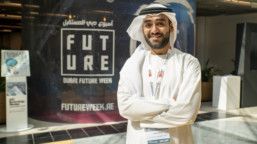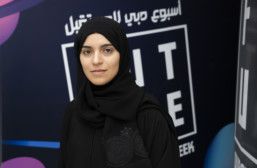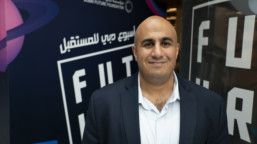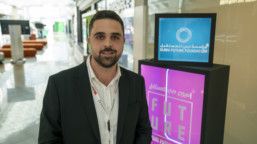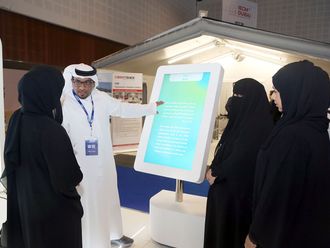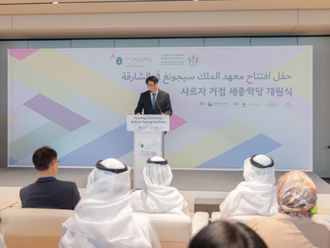DUBAI Millennials from the region have come together to prove to the world that they can make a difference at the second EmTech MENA 2019 “Innovators Under 35” competition at Dubai Future Week. They included students from not just the UAE, but also Saudi Arabia, Jordan and Lebanon.
The annual award recognises outstanding innovators who are younger than 35 and have developed technical products or services across diverse fields that have the potential to shape the future. Its goal is to highlight the development of new technologies or the creative application of existing technologies to solve the world’s greatest challenges.
Bridging the digital-physical gap
When 33-year-old Jordanian Baha Abu Nojaim founded Mixed Dimensions, he didn’t know where it would take him. Founded in 2013, his invention uses 3D printing technology to bridge the gap between digital and physical objects. The company enables gaming companies to monetise on their digital content and enable gamers to 3D print their own custom characters, something that historically was not possible. The company has already seen success as it joined the Alchemist accelerator and moved to Silicon Valley. Looking ahead, the company’s goal is to become the platform on which gaming companies can merchandise directly on customisation done by gamers through a simple API integration, as most games depend on selling virtual items such as skins and character customisation which gamers can’t own as physical objects.
Shooting for the stars
27-year-old Abdulla Al Hajiri is an Emirati PhD candidate at the Department of Nuclear Science at MIT. He has created a new theory and framework to determine the age of stars. Through nucleosynthesis, a process by which atoms heavier than hydrogen are formed in the cores of stars, he is able to obtain an accurate age for the stars and for the universe. Abdulla has strong convictions that this technology can impact different industries. Since nuclei interactions occur not just in stars, but also in nuclear reactors, fusion reactors, medical MRI machines and many others, this methodology has the potential to impact the design of future technologies in medicine and clean energy.
Robots to the rescue
Lebanese national Abbas Sidaoui is the co-founder and CTO of Revotonix, a company specialised in developing mobile robots and mechatronics solutions to help in cutting down wasted time and cost in the industry, while also improving people’s life. Felix, the company’s first robot, is a fully autonomous mobile robot that is used mainly for advertising purposes. When deployed in an indoor venue, Felix first builds a map of the environment then uses this map to navigate autonomously while avoiding static and dynamic obstacles. While moving around, Felix can detect viewers, predict their age and gender and recognise their outfit. Based on these predictions, Felix will analyse the viewers’ interests and display targeted ads from its database. The company has also developed a special avatar that pops up on Felix screens to interact with people and grab their attention. Moreover, Felix drives autonomously to its charging station when the battery level drops, then it goes back to duty when the battery is full.
Reducing sound of echoes sans energy
Coming from Saudi Arabia, 34-year-old Alaa Algargoosh is a PhD student in architecture at the University of Michigan. She is applying Cymatics, the study of sound, in a diffuser that she developed and called “The Cymatic Diffusers”. As a result, she can reduce sound blemishes such as echo. What’s more, the Cymatic Diffusers requires no energy and has resulted in a sustainable product that utilises advanced technology. Its mechanisms depend on engineering the shape to treat sound defects, allowing to use healthier and more sustainable materials and it is smart and simple to construct and use. It is an advancement of the methods used in some historical buildings to amplify sounds before the emergence of the sound system technology.


